THIS WEEK’S EVENTS
Monday, June 12 — Field Day K-2 AM; 3-5 PM
3rd Grade Field Trip to Thunderbowl
PBIS Basket Raffle preview/ticket drop
Metzger to Riley in AM
Mrs. Lauth family potluck — Courtyard
Maynard Walking Field Trip to AP Library 12:20 p.m.
Eval Meeting Yesh 1:00 p.m.
Eval Meeting Skebo 3:30 p.m.
Board Meeting — PTA Recognition
Tuesday, June 13 — 5th grade brunch
3rd Grade to Champaign Park
McCall Walking Field Trip to AP Library 9:00 a.m.
PBIS Basket Raffle distribution
Eval Meeting Maynard 10:05 a.m.
Lauth Walking Field Trip to AP Library 10:15 a.m.
1/2 Day 11:40 Dismissal
Class List/Scheduling Meetings beginning at 12:30 p.m.
Eval Meeting Dalton 3:30 p.m.
Wednesday, June 14 — 5th grade Awards Ceremony 10:00 a.m. Cafeteria
Kindergarten Year-End Celebration
1/2 Day 11:40 Dismissal
Eval Meeting Klein 12:00 p.m.
Eval Meeting Simonds 1:00 p.m.
Thursday, June 15 — LAST DAY FOR STUDENTS
Eval Meeting McCall 10:05 a.m.
Eval Meeting Lauth 1:00 p.m.
1/2 Day 11:40 Dismissal
Mindfulness Group/WrapUp Meeting 2:00 p.m.
Friday, June 16 — LAST DAY FOR STAFF

WRAPPING IT UP
Wow! Another year is coming to a close! It has been a challenging year, and you have met the challenges with professionalism and determination. I am proud of you for the ways you worked tirelessly to do the best work for our students. Enjoy this last week together. Remember that some of our small friends are uncertain about what lies ahead for them this summer, and their anxiety may present itself in different ways. Thank you for your patience and the kindness with which you will send our Bobcats off into the summer at the end of this week.

MINDFULNESS UPDATE
Although it has certainly been a challenge to squeeze in the time to engage in Mindfulness training, I am so impressed with the efforts of our staff to learn together at this time of year. If you have not been able to keep up with the modules, please consider going in and clicking through and making a brief comment when needed so you can maintain access to this valuable information in the future! As a final wrapup, I would like to invite everyone to participate together in the final week’s reflection meeting. This meeting will take place in the Media Center at 2:00 p.m. on Thursday, June 15. This meeting will also be our chance to gather some final thoughts on our initiatives for this year, and plans for next year. This is an optional meeting. Hope to see many of you there. 🙂

GRADE LEVEL SCHEDULING MEETINGS
Thank you for completing your data in Class Creator!
We will meet on Tuesday, June 13 to review class lists and talk about common daily schedules for next year. Now that you have “lived” the schedule for a year, keep in mind what changes or adjustments you would like to make for your grade level team to be most effective and best meet the needs of students at all levels.
| Grade Level | Time |
| Kindergarten | 12:45 |
| 1st Grade | 1:15 |
| 2nd Grade | 1:45 |
| 3rd Grade | 2:15 |
| 4th Grade | 2:45 |
| 5th Grade | 3:15 |
THANK YOU, PTA
We are so grateful to our Bennie PTA, who has made a generous donation to our school so we may begin construction of our Outdoor Learning Center this summer! This was made possible by the generosity of Bennie families through this year’s fundraising efforts! Stay tuned for text reminders this summer when we are ready for a work crew!

SAFE SCHOOLS
Mike Dawson has indicated that the Safe Schools training window will open on July 1 with a due date of October 31. Please let me know if you need any assistance accessing your Safe Schools account when the window opens.

YEAR END SURVEYS
If you have not already done so, please take a few moments and complete these year-end surveys for our MTSS program and Math in Focus program. We appreciate the feedback you have given us all year long, and are looking forward to your final thoughts so we may improve for next year!
Math in Focus Survey: https://docs.google.com/a/appublicschools.com/forms/d/e/1FAIpQLSfIgv964WvXuLWYa68E8WX3nE1M0S-_KuKmpupPAdkuz1IAXg/viewform

MSTEP FEEDBACK
Hello –
Here is an opportunity for you to provide feedback regarding the 2017 Spring Test Administration. College Board and MDE have set-up surveys to collect this information, please forward the survey links to staff as needed. The surveys need to be completed by June 16, 2017.
College Board would like feedback about this spring’s PSAT 8/9, PSAT 10, and SAT administration.
Survey link: www.surveymonkey.com/r/2017michiganfeedback
The Michigan Department of Education (MDE) would like feedback regarding your experience during the 2017 Spring Administration.
Survey link: https://baameap.wufoo.com/forms/spring-2017-mstep-online-administration/
Thank you,
Cindy Taraskiewicz
Wayne RESA
CONGRATS, GRADS!
2017 Allen Park High School graduation http://media.thenewsherald.

WRAPPING UP
Wrapping Up the School Year: 5 Reflective End-of-Year Activities
Editor’s Note: Read more end-of-year ideas from one of our favorite bloggers, Carrie Kamm.
The last days of the school year are ticking by. As more and more milestones get crossed off your list, you may be left wondering how to wrap up the school year. Last year I wrote about how teachers can reflect on their “shining moments” at the end of the school year. This year I’ve asked several teachers to share their favorite end-of-year activities in hopes that you’ll find one that feels just right to use in your classroom.
1. Advice for Future Students
Make a list of advice for future students by asking current students to reflect on the year and share tips for success. High school math teacher Lauren Collins says this activity usually yields a good mix of funny and serious advice, which she prints out and gives to the next year’s class on the first day of school.
2. Graph of Highs and Lows
High school ELA teacher Esther Wu asks students to draw a graph of their year’s highs and lows on 8.5 x 11 paper with emoticons, symbols, lessons learned, songs of the month, etc. Students use the month of the year as the x-axis, and their emotions, what they learned, etc., as the y-axis.
3. Top Ten List
Another great idea from Esther Wu is to have students work in small groups to come up with a Top Ten List about the year. Students can be as serious or funny as they wish in presenting their lists to the class. Esther shares that this activity is super fun, plus you get to learn a lot about what students found meaningful about the school year.
4. Common Core Reflection
Katie Novak, K-12 reading coordinator, has her students grade her on how well she taught the Common Core ELA Standards. She gives her students a copy of the standards, then makes her case for how each standard was covered over the course of the year by reviewing lessons, literature, prompts, etc. Katie shares that hearing her students assess how the CCSS were covered allows her to assess students’ learning in a non-threatening way.
5. Graffiti Wall
Reflection can happen individually, in small groups, and as a large group. Sherwanda Chism, K-6 gifted ELA teacher, has a great way to get the whole class reflecting together. She creates a “Graffiti Wall” by covering a wall in her classroom with bulletin board paper. Students then write and draw about their greatest learning experiences that took place in her class. Sherwanda shares how this activity helps students to reflect, while simultaneously providing feedback for her on her practices.
What are your favorite end-of-the-year reflection activities? Comment below to share your ideas for closing out the school year. And read Carrie’s blog with four more ways to end the school year.
Lily Jones taught K/1 for seven years in Northern California. She has experience as a curriculum developer, instructional coach, teacher trainer, and is also a contributing writer for Teaching Channel.
FREE ONLINE WORKSHOPS
Hi!!
I hope you’re having a great start to the month of June!
I am SO excited to share that I have a bunch of FREE online workshops planned out for June, July, and August! Yay!
I have a couple of things about the workshops to share, so please read all the way thru this email.
First, at the bottom of this message, I’ve listed out all of the workshop dates and sign-up links. Click on the dates to sign up.
You are welcome to sign up for as many workshops as you like! You are also welcome to forward this email to your teammates and teacher friends! Everyone who attends will get a freebie, as usual.
AND – I will be doing a giveaway during EVERY single webinar!
The giveaway will be different for each workshop – it could be a gift card, a book, shopping money for my store…it’ll be a surprise! In order to qualify for the giveaway, you have to attend the workshop live.
Speaking of attending live…it really is the best way to get the most out of the workshop. When you attend live, you can chat with other teachers, share ideas, and learn from them, too.
However. I totally get that you might be traveling, or the times don’t work for you, or you live in Australia and don’t want to watch PD in the middle of the night.
SO I decided to invest in software where I can upload ALL of my workshops + freebies + certificates + slides for you to access anytime, anywhere.
There are currently 4 workshops already in there. If you get a subscription, every single time I teach a new workshop, it will be added – at no extra cost!
You can read more about it here: http://courses.
Okeydoke…I think that’s it. Check out the workshop dates and times at the bottom here. Write back if you have any questions!
Looking forward to seeing you on the workshops!!
– Alison
UPCOMING WORKSHOPS
How To Launch Reading Workshop in K-2 (*NEW*)
How To Launch Writing Workshop in K-2
How To Differentiate Your Writing Instruction
How To Schedule Your K-2 Balanced Literacy Block (*NEW*)
Guided Reading Made Easy (aka Guided Reading 101)
Advanced Guided Reading (aka Guided Reading 102) (*NEW*)
How To Teach Comprehension in K-2

MAKING HOMEWORK OPTIONAL IS THE WAY TO GO!
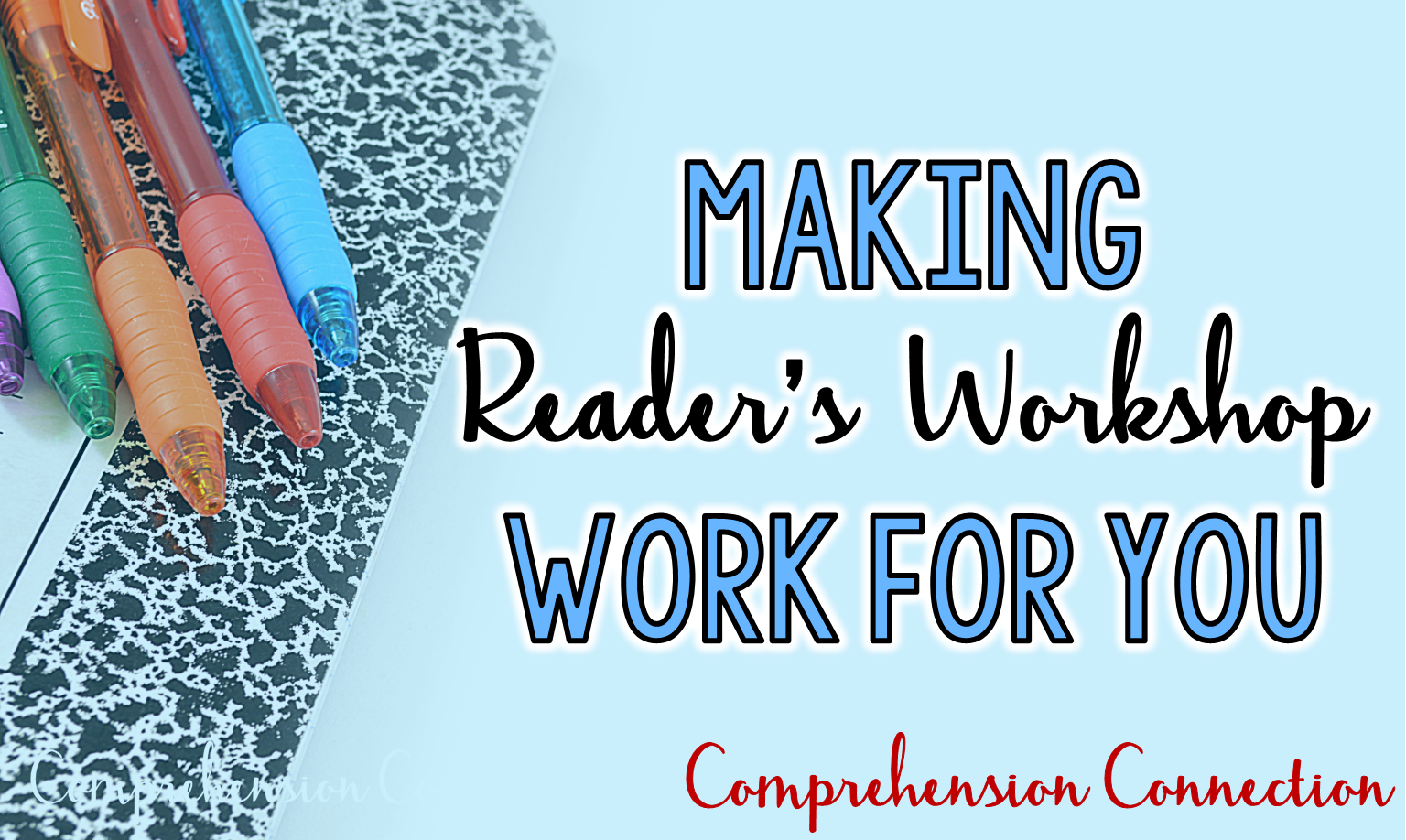
MAKING READER’S WORKSHOP WORK FOR YOU
Have you been interested in exploring a workshop model for your language arts block, but feel like you need to understand a little more about it? The workshop model keeps the reader and writer in mind, emphasizes choices, and employs more partner and small group learning. Today, I thought I’d share tips you might use as you begin thinking about ways to improve literacy instruction next year.
Routines Matter
Structuring the Literacy Block
As you think about reader’s workshop, the first step is to set your schedule up for success. There needs to be a predictable routine for the students in order for them to carry out their reading plans. For reader’s workshop, you’ll need about an hour and a half of time for a class size of approximately 20 students or three reading groups. Here’s a sample schedule:
(Suggested 20-25 minutes)
Guided Reading Groups/Literacy Workstations/Independent Reading or Literature Circles
(Suggested 50 -60 minutes)
Whole Group Writing Mini-Lesson
(Suggested 20 minutes)
Writer’s Workshop
(Suggested 20-30 minutes)
Sharing
(Suggested 10 minutes)
As you can see in the schedule, the reading block begins with whole group instruction. The mini-lessons at the start of the year are typically focused on routine building. Teachers model how literacy workstations, literature circles, and word study work is to be done as well as establish rotation plans, rules for bathroom/water breaks, and even how questions are to be asked. We know kids will have them, right? Taking time to establish your expectations for independent work and work at the table pays off all year long.
The Mini Lesson
Turn and Talk
Setting the Purpose
Small Group Instruction
Organization:
Guided Reading Groups:
Daily Five:
Literature Circles:
Conferring with Kids:
Assessment
Closing
What Can We Do Now for Later?

INTERESTING ARTICLE
5 Research-based Practices for Kindergarten and First Grade
5 Powerful Research-Based Techniques for Exemplary Kindergartens Today
By Eileen Feldgus PhD and Isabell Cardonick MEd
The recent high-profile spotlight on a landmark study in Developmental Psychology has drawn attention to research by Canadian cognitive psychologists Gene Ouellette and Monique Sénéchal (2017). In some respects Ouellette and Sénéchal discovered what we, Eileen and Isabell, have advocated for decades: a powerful connection to improved end-of-first-grade reading scores through the use of early writing and invented spelling. The study’s title, “Invented Spelling in Kindergarten as a Predictor of Reading and Spelling in Grade 1: A New Pathway to Literacy, or Just the Same Road, Less Known?”(Ouellette and Sénéchal, 2017), reflects what exemplary kindergarten teachers have known about the powerful writing/reading connection for years—kid writing is a pathway to reading success. But this work is still not well known or universally practiced. This less-known pathway is the one we traveled. Starting out as passionate kindergarten teachers in the 1960’s and 70’s, we were ardent about creating classrooms that worked for children. We devoured the research of that era and became life-long learners throughout our careers. Early on we discovered better outcomes for children as we focused more on writing, encouraged invented spelling, developed innovative strategies for teaching phonics and eliminated boring worksheets. Today in 2017 five best-practice techniques we discovered in our practice are now wholly supported by research and recommended for today’s kindergartens and first grades.
1. Use Invented Spelling (Ouellette & Sénéchal, 2017). We found invented spelling to be joyful, motivational for our students, and wonderful in terms of providing opportunities for scaffolding and systematically teaching almost all important aspects of the kindergarten literacy curriculum including phonics, phonemic awareness, knowledge of the alphabet, writing conventions, and vocabulary development. But perhaps the most amazing discovery throughout our journey was that kids had remarkable capacities to make meaning if we supported them in the process and allowed their creative juices to flow. Early on we learned as we had read in Don Graves’ research (1983), that kids write best when we step back and allow them to choose their own topics and give them ownership and autonomy. We called our teaching model, “Kid Writing” (1999). Our model fit perfectly with a growing model now called Guided Reading for differentiated reading instruction (Fountas & Pinnell, 2012) and we put in a whole layer underpinning Lucy Calkins work (2003) by showing teachers exactly how to get started and how to move forward with writing workshop and formative assessment. Here are a few samples that illustrate kids’ capacity to grow and flourish as writers in kindergarten:
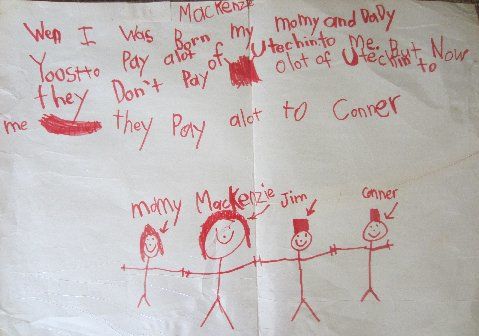
When I was born my mommy and daddy used to pay a lot of attention to me. But now they don’t pay a lot of attention to me. They pay a lot to Conner.
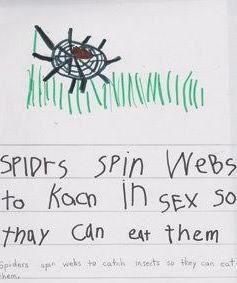

2. Abandon teaching “Letter of the Week (Reutzel, 1992, 2015). Teaching one letter per week was standard practice in kindergarten when we began teaching. We tried our best to jazz up our teaching of the alphabetic principle because we knew it was essential to breaking the code and reading. Our students sang for the letter, danced for the letter, cooked for the letter, and cut and pasted for the letter. We took elaborate measures to teach the alphabet and sounds because we knew it was important. One fond memorywas our “P” Party:” we served foods beginning with P—pizza, pretzels, popcorn, pepperoni, and the like. But with letter of the week the pace was too slow, and as far back as 1992 researchers were noticing the same problem and cautioning teachers to “break the letter-a-week tradition.” (Reutzel, 1992)
So in our classrooms we began to use children’s names on the first day of kindergarten—from Albert to Zoie—and learned to focus on all the sounds and letters from the very beginning. In contrast to when we were using letter of the week our students mastered letters and sounds far sooner.
Today, as reported by Reutzel (2015), “research has identified six evidence- based alphabet letter learning orders through which young children may acquire knowledge of alphabet letter names and sounds (Justice, Pence, Bowles, & Wiggins, 2006 ).” And guess what? “The first learning order is called the own-name effect.” (Reutzel, 2015) We got it right before the research proved it!
3. Use Invented Spelling and a Developmental Writing Scale to monitor progress (Gentry, 2006, 2000). Even before we published the first book on Kid Writing, we were collaborating with Richard Gentry on how to use a developmental spelling/writing assessment along with a developmental rubric to show how young children’s progression through five phases of developmental spelling revealed—among other things—the individual child’s understanding of phonics and his or her invented spellings as evidence of what the child knew or did not know. We found this work to be much more powerful for targeting instruction and monitoring kindergartners’ progress than traditional spelling tests or even measures of phonemic awareness and alphabet knowledge. Progress monitoring by phase observation is now supported by empirical research! (Ouellette & Sénéchal, 2017)
When we started out as neophyte teachers, kids were simply memorizing words that we gave them on a list. We learned to scaffold what they were using in their invented spelling and to show them how English spelling works. Our teaching went from giving lists of what to spell to showing kids how to spell and invented spelling was our vehicle! Without getting into the particulars of an analysis, look at the following samples that show one kindergarten child’s remarkable progress from fall to spring of her kindergarten year.
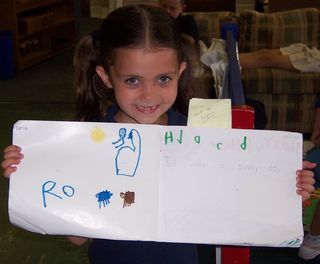
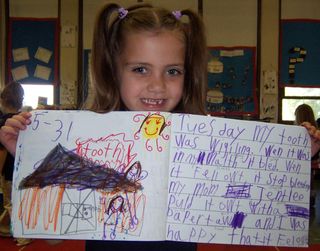
September sample: It was a sunny day.
June sample: Tuesday my tooth was wiggling. When it was in my mouth, it bled. When it fell out, it stopped bleeding. My mom gently pulled it out with a paper towel and I was happy that it fell out.
4. Let go of worksheets! (Palmer & Invernizzi, 2015). We found that teaching and learning in our classrooms improved when we abandoned worksheets. Remember those nonsensical work sheets where children were to write the letter that the word for each picture would begin with? When we first began teaching we remember students who squirmed with sit-at-the-desk busy worksheets and struggled over the Y is for Yak worksheet wondering why Y was the match for the first sound in “goat” which is the picture they saw on the worksheet.
5. Teach children to stretch though a word with a moving target. (Feldgus, Cardonick, & Gentry, 2017) Research by Ouelette, validated our Stretching Through a Word with a Moving Target teaching methodology. Their research, “confirmed that facilitating invented spelling within a Vygotskian teaching approach can bring about benefits in learning to read and spell, and these benefits go beyond the expansion of alphabetic knowledge and phonological awareness.
Our stretching through technique, for example, helped kids move from l for lady in Phase 2 to lad in Phase 3 to ladee in syllable chunks in Phase 4 on the way to conventional lady. The stretching through technique met kids where they were and supported them in moving to higher levels of spelling sophistication from phase to phase.
Keep the Faith—Keep the Passion—Keep Your Kids Writing
One thing that hasn’t changed over the years is our passion for literacy-learning classrooms for beginners. Today as staff developers and authors, we continue to encounter kindergarten teachers all over America and beyond who share our passion, devotion to children, and vision for joyful, play-based, academic kindergarten and first grade classrooms. We believe implementing these five research-based strategies surrounding kid writing will be transformational in America. It is the answer to reversing the decades-old trend of flat-lined first grade reading scores!
For details on these five strategies and creating joyful kid-writing classrooms that work, check out our comprehensive guide for kindergarten and grade 1 teachers: Kid Writing in the 21st Century: A Systematic Approach to Phonics, Spelling and Writing Workshop (Hameray, 2017).
Link to Kid Writing to learn more.
Dr. J. Richard Gentry is the author of Raising Confident Readers, How to Teach Your Child to Read and Write–From Baby to Age 7. Follow him on Facebook, Twitter, and LinkedIn and find out more information about his work on his website.
References
Calkins, L. M. (2003). The Nuts and Bolts of Teaching Writing. Portsmouth, NH: Heinemann.
Feldgus, E., Cardonick, I. & Gentry, J. R. (2017). Kid Writing in the 21st Century. Las Angeles, CA: Hameray Publishing Group.
Fountas, I. and Pinnell, G.S.(2013). The Reading Teacher. 66 (4) 268-284.
Gentry, R. (2006). Breaking the code: The new science of beginning reading and writing. Portsmouth, NH: Heinemann.
Gentry, R. (2000). A retrospective on invented spelling and a look forward. The Reading Teacher. 54 (3) 318-332.
Graves, D. H. (1983). Writing: Teachers and Children at Work. Portsmouth, NH: Heinemann.
Justice , L.M. , Pence , K. , Bowles , R.B. , & Wiggins , A. ( 2006 ). An investigation of four hypotheses concerning the order by which 4- year- old children learn the alphabet letters. Early Childhood Research Quarterly, 21 ( 3), 374 – 389 .
Ouelette, G. & Sénéchal, M. (2017). Invented spelling in kindergarten as a predictor of reading and spelling in grade 1: A new Pathway to literacy, or just the same road, less known? Developmental Psychology. 53 (1) 77– 88. http://dx.doi.org/10.1037/dev0000179
Palmer, J. & Invernizzi, M. (2015). No More Phonics and Spelling Worksheets. Portsmouth NH: Heinemann.
Reutzel, D. R. (2015). Early literacy research: Findings primary-grade teachers will want to know. The Reading Teacher. 69, (1), 14–24. DOI: 10.1002/trtr.1387 © 2015 International Literacy Association
Reutzel , D.R. ( 1992 ). Breaking the letter- a- week tradition: Conveying the alphabetic principle to young children. Childhood Education, 69 ( 1 ), 20 – 23 .



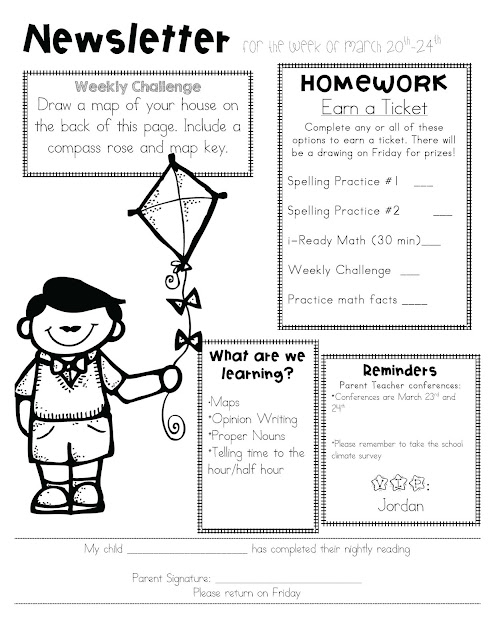







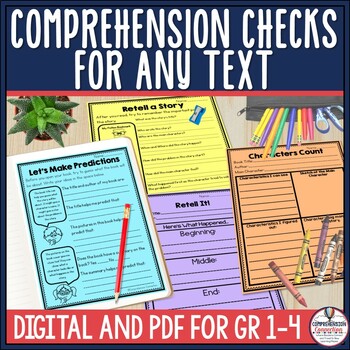

Happy Summer to All!
I like the example of optional homework. If kids read 20 minutes per night, we will see improvement in their reading skills. This takes away some of the grading of homework while still providing something for parents to work on with their child.